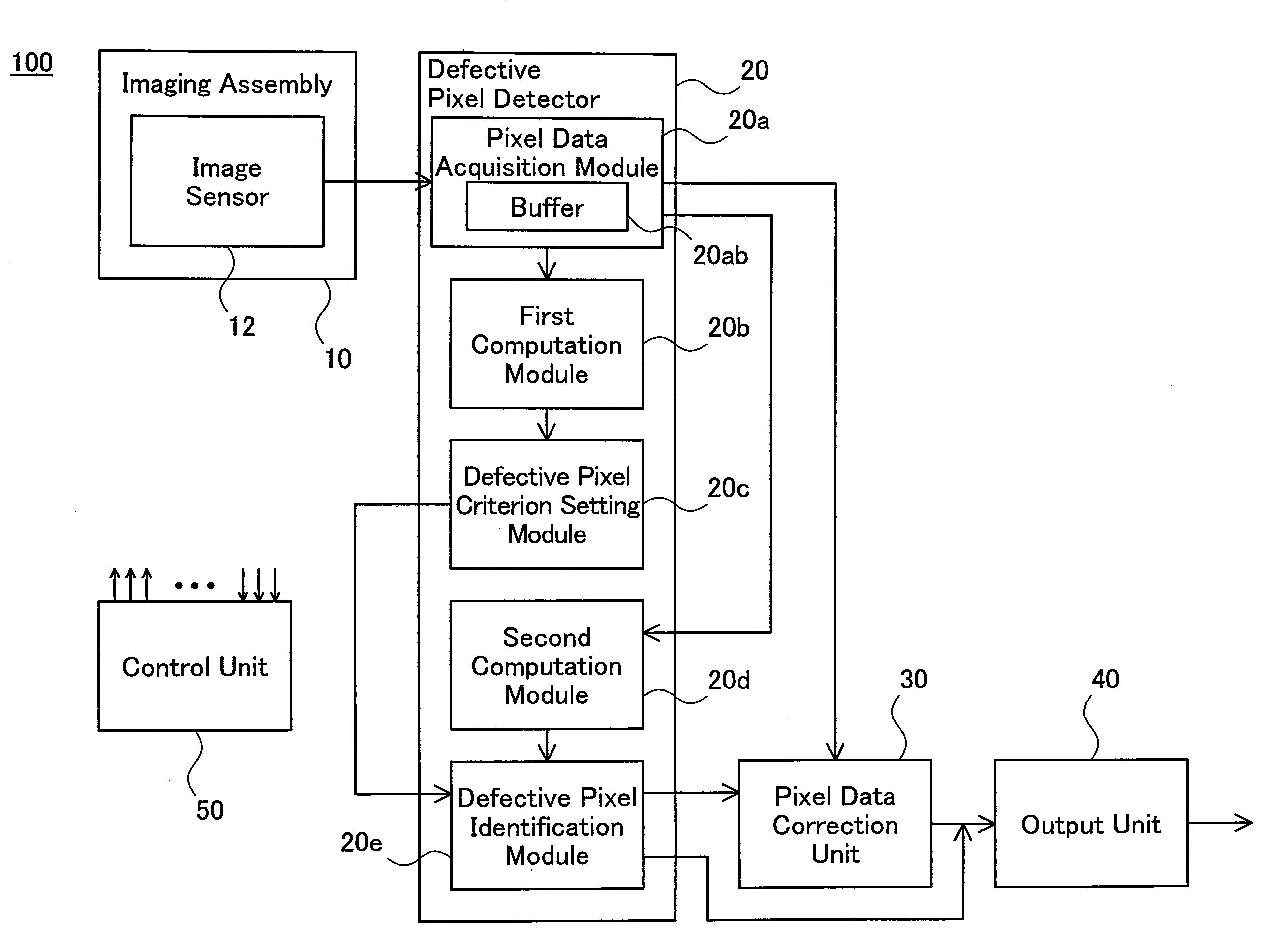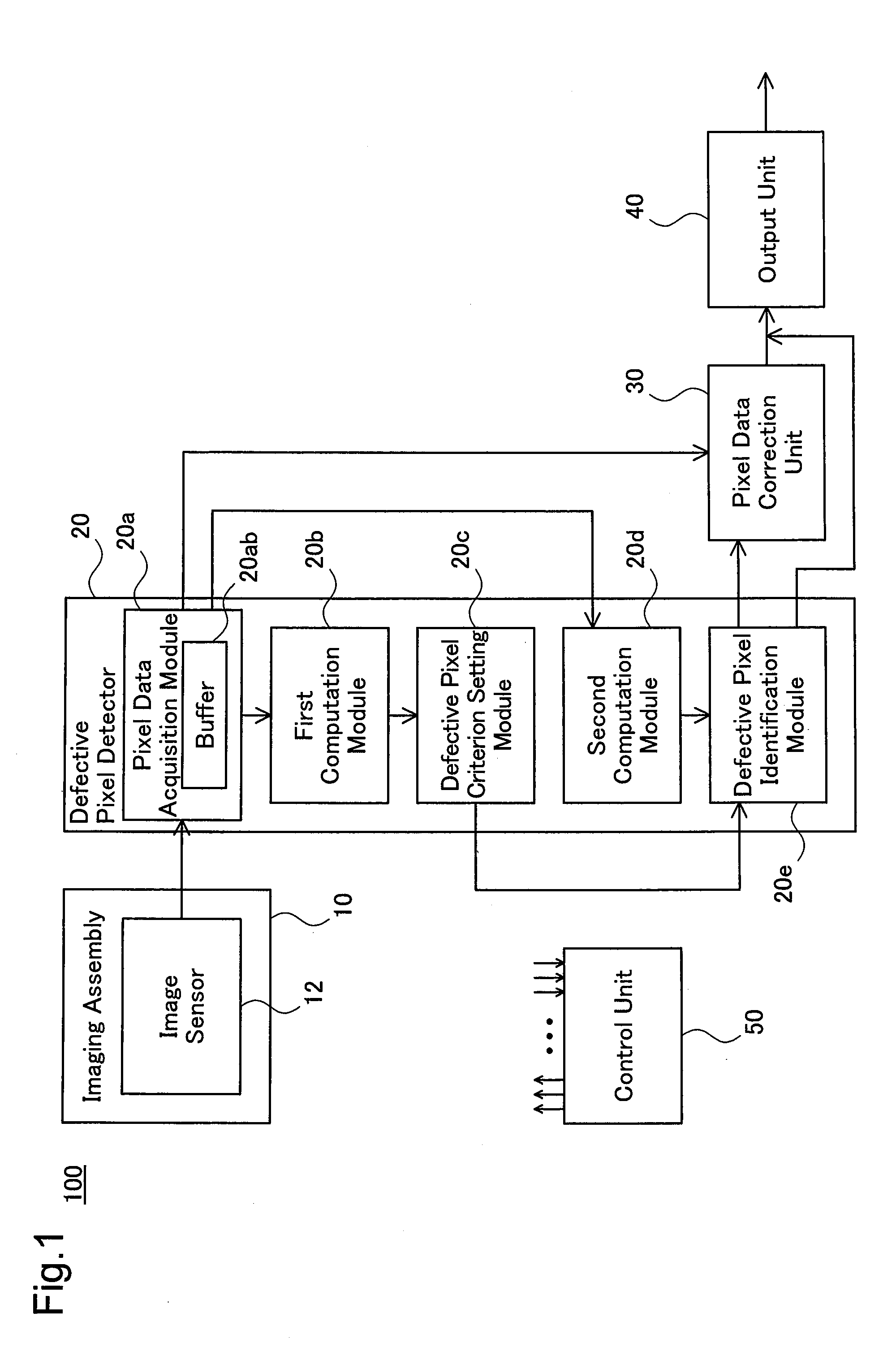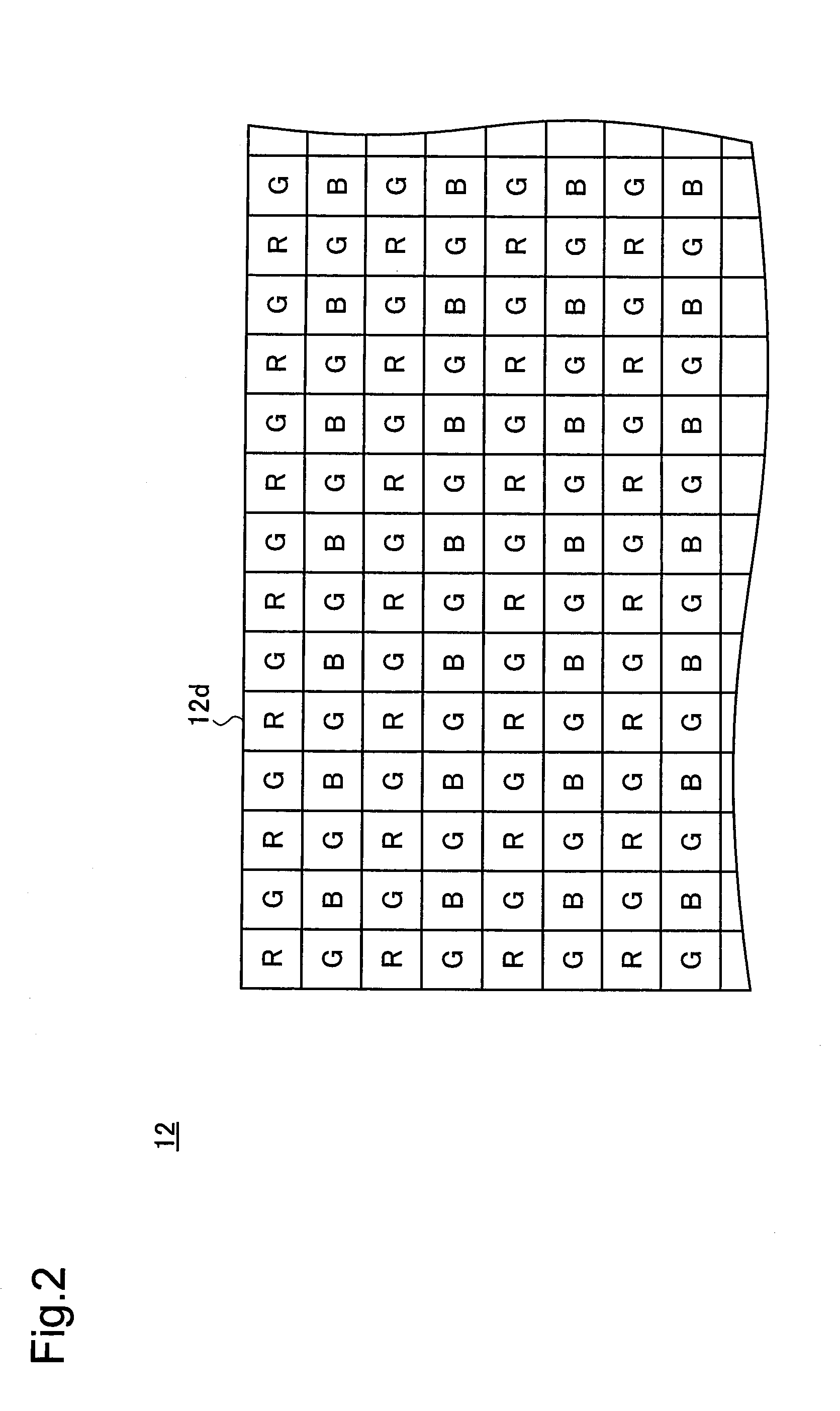Defective pixel detector, imaging device, and defective pixel detection method
- Summary
- Abstract
- Description
- Claims
- Application Information
AI Technical Summary
Benefits of technology
Problems solved by technology
Method used
Image
Examples
first embodiment
A. First Embodiment
A1. Structure of Imaging Device
[0053]FIG. 1 schematically illustrates the structure of an imaging device 100 in a first embodiment of the invention. The imaging device 100 includes an imaging assembly 10, a defective pixel detector 20, a pixel data correction unit 30, and an output unit 40. The imaging device 100 successively detects defective pixels (white defects and black defects) among multiple pixels constituting an image taken with the imaging assembly 10, corrects pixel data of the detected defective pixels, and outputs the corrected pixel data as explained below. The defective pixel detector 20, the pixel data correction unit 30, and the output unit 40 are configured by the hardware in this embodiment, although some part of these constituents may be implemented by the software configuration. The imaging device 100 also includes a display unit constructed to display the taken image, for example, a liquid crystal panel, and a recorder unit constructed to sto...
second embodiment
B. Second Embodiment
B1. Structure of Imaging Device
[0111]FIG. 9 schematically illustrates the structure of another imaging device 100A in a second embodiment of the invention. The imaging device 100A of the second embodiment has an imaging assembly 10A of a three-plate type including three image sensors 12R, 12G, and 12B, for example, CMOS sensors. The imaging assembly 10A has a light color separation optical system, in addition to the zoom lens, the focusing lens, and the aperture mechanism included in the imaging assembly 10 of the first embodiment. The light color separation optical system includes a prism arranged to separate the incident light entering via the zoom lens, the focusing lens, and the aperture mechanism into three color lights red (R), green (G), and blue (B). The image sensors 12R, 12G, and 12B respectively generate red (R) pixel data, green (G) pixel data, and blue (B) pixel data. Each of the image sensors 12R, 12G, and 12B has multiple light receiving elements a...
modified example 1
C1. Modified Example 1
[0125]In the procedure of the first embodiment, the defective pixel criterion setting module 20c sets the defective pixel criterion Vjth(R) for the red (R) target pixel Rt to the threshold value Vjth1(R) when at least one of the multiple absolute values Vabs1(R) is not less than the preset threshold value Vth(R), while setting the defective pixel criterion Vjth(R) to the threshold value Vjth2(R) when all the multiple absolute values Vjth(R) are less than the preset threshold value Vth(R). This arrangement is, however, neither essential nor restrictive. In one modified procedure, the defective pixel criterion setting module 20c may set the defective pixel criterion Vjth(R) to the threshold value Vjth1(R) when all the multiple absolute values Vabs1(R) are not less than the preset threshold value Vth(R), while setting the defective pixel criterion Vjth(R) to the threshold value Vjth2(R) when at least one of the multiple absolute values Vjth(R) is less than the pre...
PUM
 Login to View More
Login to View More Abstract
Description
Claims
Application Information
 Login to View More
Login to View More - R&D
- Intellectual Property
- Life Sciences
- Materials
- Tech Scout
- Unparalleled Data Quality
- Higher Quality Content
- 60% Fewer Hallucinations
Browse by: Latest US Patents, China's latest patents, Technical Efficacy Thesaurus, Application Domain, Technology Topic, Popular Technical Reports.
© 2025 PatSnap. All rights reserved.Legal|Privacy policy|Modern Slavery Act Transparency Statement|Sitemap|About US| Contact US: help@patsnap.com



